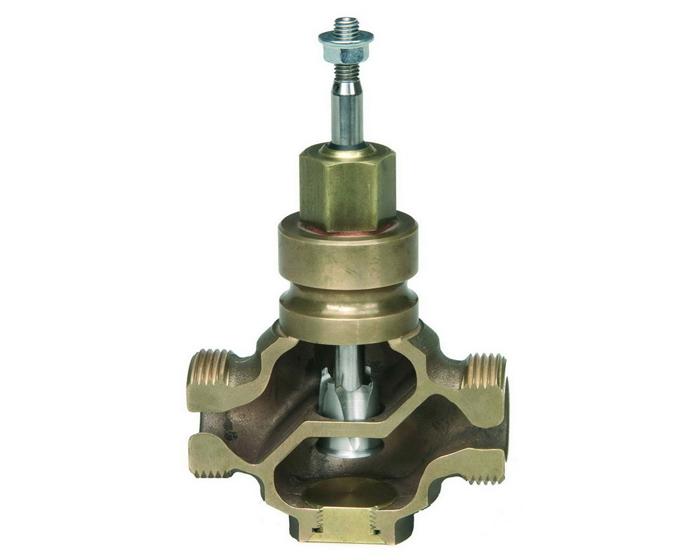Please do not block ads on our site. Clicks on ads help us exist, grow and become more useful for you!
Control valve construction
Saddle regulating valve (linear) - made based on a saddle valve. Regulation is carried out by changing the flow area between the shutter and the seat. Linear regulating valves of this type are so named because they are used together with electric drives with linear movement of the stem.
The universal design of the valve allows to create virtually any flow characteristic by modifying the shutter and seat. Excellent regulating characteristics and simple construction of the regulating valve with a saddle shutter have contributed to its wide use in building engineering systems.
The only drawback of linear valves is the complex shape of the flow part, which is unsuitable for viscous media.
Ball regulating valve (rotary) - made based on a ball valve. Regulation is carried out by changing the flow area by rotating the ball around an axis perpendicular to the direction of water flow.
The flow area of the ball can be circular or have another shape. Rotary regulating valves of this type are so named because they are used together with drives with radial rotation of the stem.
Ball regulating valves are used together with rotary drives with high closing force and are controlled by radial movement of the stem. The drawbacks of ball regulating valves are the need for expensive electric drives with high closing force and the difficulty of creating a linear or equal percentage flow characteristic - as a result, low regulation accuracy.
The advantages include a simple flow part shape suitable for use with viscous working media.
Regulating valves are classified by the presence of a protective function:
- Normally open - open the flow area when power is turned off.
- Normally closed - close the flow when power is turned off.
- Without protective function - the valve stops when power is turned off.
question : comment : feedback
206
 Catalog of
Catalog of control valves
Belimo
Belimo
Danfoss
Danfoss
Danfoss
Danfoss
LDM
LDM
LDM
КПСР Групп
КПСР Групп
КПСР Групп
Clorius
IMI Hydronic
IMI Hydronic
IMI Hydronic
IMI Hydronic
ESBE
ESBE
ESBE
Honeywell - Resideo
Honeywell - Resideo
Honeywell - Resideo
Honeywell - Resideo
ESBE
ESBE
ESBE
Clorius
Clorius
Siemens
Siemens
Siemens
Siemens
Siemens








 Tutorial Belimo
Tutorial Belimo
